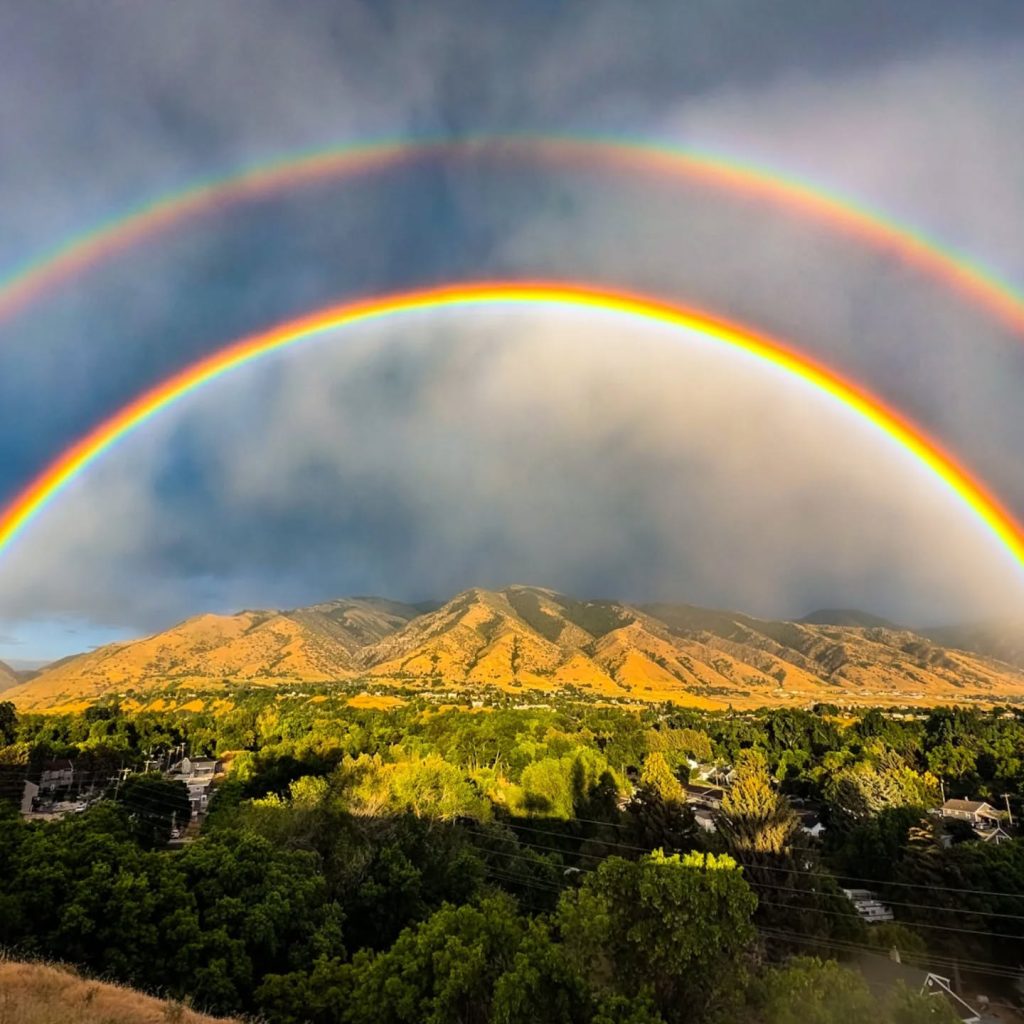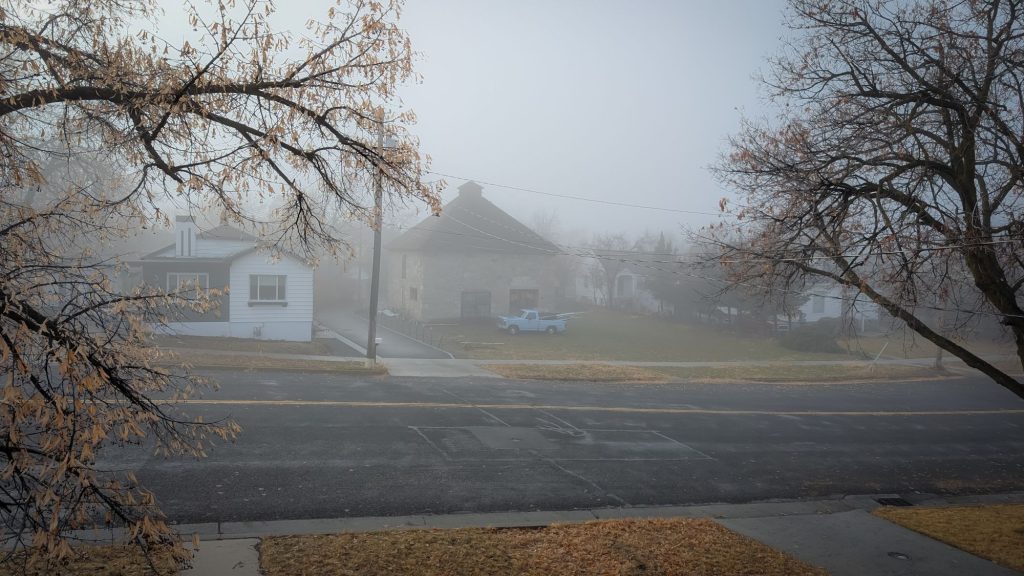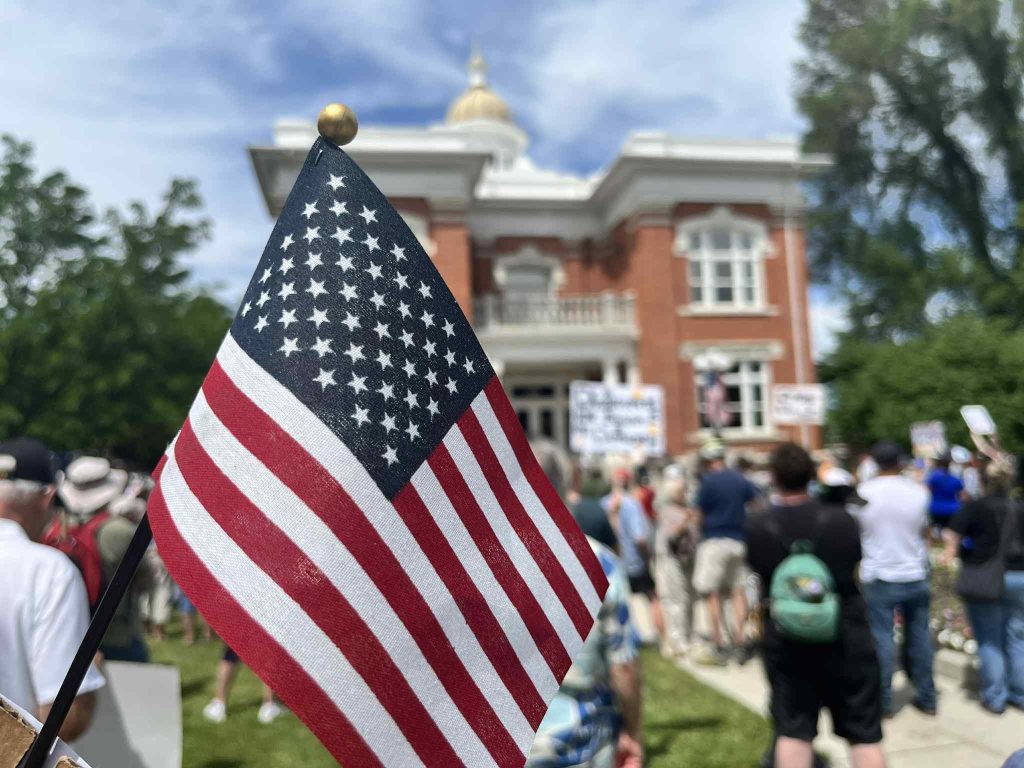Logan is at a turning point. Mayoral candidate Alanna Nafziger says it’s time to rethink growth, protect our natural assets, and put real power back in the hands of Logan’s residents. In this deep-dive, Nafziger talks rivers, housing, jobs, climate – and the truth about what’s broken in city government.
TLDR – Nafziger platform: Growth, green space, government transparency
- Logan’s rapid growth is eroding open space, community identity.
- Nafziger prioritizes green space protection.
- Advocates “missing middle” housing for affordability, not just high-rises or sprawl.
- Calls out lack of parks and public spaces in new developments.
- Wants walkable neighborhoods and support for local businesses.
- Pushes for less parking, safer streets, and better urban design.
- Demands honest, transparent city government and real public input.
- Supports water conservation and clean energy over fossil fuels.
- Rejects city cooperation with ICE – seeks community trust.
- Learn more about Alanna Nafziger at www.alannaformayor.com.
- Vote in Logan’s election on August 12.
Chapters
- Logan is growing. It has a cost.
- Why Alanna Nafziger is running for Logan mayor
- Logan, green spaces, and the Little Logan River
- Rethinking Logan’s housing construction
- Logan parking, walkability, business development
- Rebuilding trust in Logan’s government
- Logan’s economy and job market
- Logan’s water and energy future
- ICE and government transparency
- Logan’s role in education, family health
- Vote in Logan’s 2025 election on August 12
Logan, Utah, is growing. It has a cost.
You don’t know what you have until it’s gone.
That’s the line Alanna Nafziger leads with. And if you live in Logan, Utah, you’ve probably felt it: the city is booming, but the things that make it special – open spaces, the Little Logan River, the easy sense of community – are under threat. Growth may not be optional, but how we grow? Nafziger says that’s up to us.
“We’d really be hurting ourselves to lose the things that make Logan a great place to live.”
Why Alanna Nafziger is running for mayor of Logan, Utah
Nafziger never planned to run for office. Born and raised in Logan, she left for a time, only to return and feel the ache of change. She brings something rare to local politics: a background in landscape architecture, urban planning, and farming. She sees the “big, complex projects” in ways that others can’t.

Green space, the Little Logan River, and Logan’s future at risk
For Nafziger, the fight is personal. She grew up playing in the Little Logan River. When the city attempted to pipe the Little Logan River, she felt it was “a massive mistake.” Nafziger says that research shows open waterways aren’t just pretty; they’re vital to public health and community wellbeing.
While public opposition managed to rein in the city’s original plan, it was a wake-up call. Nafziger notes that Logan’s track record on green space isn’t great, either. She asks: New developments keep coming, but where are the parks? “We’ve had green spaces for so long, we take them for granted,” Nafziger says. “But once they’re gone, they’re gone.”
Rethinking Logan growth: Housing, density, and the “missing middle”
Logan can’t just expand outward – mountains and marshland block the way. So growth means density. But density doesn’t have to mean ugly, out-of-scale high-rises. Nafziger advocates for “missing middle” housing: townhomes, duplexes, smaller-scale multi-family units that keep neighborhoods walkable, affordable, and human.
Affordable housing is the elephant in the room. Without it, Logan loses not only talent, but its very sense of belonging. Nafziger calls for more creative, flexible zoning and a willingness to experiment: “We can’t just keep building the same way and expect different results.”

Smarter urban design: Logan city parking, walkability, and local business development
One thing Nafziger highlights as something that can be considered and built differently is parking. While underground lots aren’t feasible in Logan (the water table’s too high), Nafziger points to more progressive ideas: reducing parking minimums for buildings, building green roofs, and giving people more access to land.
She dreams of a Logan where you can walk or bike from park to park – or maybe even shop at neighborhood markets – and actually enjoy the journey. That means connecting trails, making streets safer, and supporting small local businesses – perhaps even in the heart of some neighborhoods.
Public Engagement: Rebuilding trust in Logan city’s government
If there’s one thing Nafziger won’t sugarcoat, it’s the breakdown she sees from Logan leadership in public engagement. Too often, she says, city officials ask for input only after decisions have essentially been made.
She wants Logan to learn from models like Strong Towns and partner with Utah State University (USU), which has a Carnegie Community Engagement designation – bringing in expert facilitators, offering city official training, and trying new ways to genuinely listen to residents.
The economy, jobs, and Logan’s next generation
For Nafziger, it’s all connected. Jobs follow quality of life, and right now, from what she can see, Logan isn’t retaining enough graduates – or providing enough stable, career-level jobs. Nafziger says supporting local entrepreneurship, reducing barriers for small business, and leveraging the farmer’s market are all ways to strengthen the local economy – and give more people a reason to stay.
Logan’s water, energy, and climate responsibility
Logan’s water use has statewide consequences. Nafziger believes Logan should consider joining “Slow the Flow” or Utah Saves Water programs– which are built to help residents conserve, retrofit lawns, and protect the Bear River. She ties water conservation in Cache Valley directly to the fate of the Great Salt Lake and Utah’s climate future.
She also critiques the city’s choice to double down on fossil fuels, calling instead for investment in solar and renewables, and real transparency about how energy decisions are made.

Government transparency, ICE, and rebuilding community trust in Logan
Transparency isn’t just a buzzword for Nafziger – it’s foundational. From open records to clear timelines and accessible meetings, she wants government to be accountable and residents to feel empowered.
She’s also blunt about ICE partnerships: they don’t build safety or trust. Masked agents sow fear. For Logan to thrive, community trust must come first.
The role Logan City plays in education, family support, and community health
Education sits at the heart of Logan’s future, and Alanna Nafziger believes the city has a bigger role to play than most realize.
For her, supporting schools means more than passing budgets; it’s about tackling root issues like housing instability and food insecurity that keep students from thriving. She calls for city partnerships with schools and local nonprofits to offer after-school programs, mental health support, and provide real help for families – because when kids have a safe home and enough to eat, they’re ready to learn.
Nafziger also champions hands-on solutions like school gardens, which get kids outside, boost food security, and build practical skills for life. For Nafziger, it all comes down to this: if Logan truly cares about its future, it must invest in families and children – not just with policy, but with real, practical support.
Logan’s future is still up for grabs
Alanna Nafziger doesn’t pretend to have all the answers. But her campaign is a challenge to protect what’s great, fix what’s broken, and build a Logan that works for everyone.
If you care about green spaces, affordable housing, government transparency, and a sustainable future, this is your moment to take action.
Make sure to check your mail for your ballot and vote before August 12, 2025. If you haven’t received your ballot yet, be sure to contact the Cache County Clerk’s Office.
Frequently asked questions (FAQ) about Alanna Nafziger’s platform for Logan, Utah
Why is Alanna Nafziger running for mayor of Logan?
She wants to protect Logan’s open spaces, rivers, and sense of community as the city grows, drawing on her background in landscape architecture and urban planning.
How will Alanna Nafziger address affordable housing?
She supports “missing middle” housing – like townhomes and duplexes – over just building high-rises or endless sprawl.
What does Alanna Nafziger say about parks and green spaces?
Nafziger believes Logan needs more parks and public spaces, especially in new developments, to maintain quality of life.
How does Alanna Nafziger plan to improve Logan’s neighborhoods?
She advocates for walkability, safer streets, less required parking, and stronger support for small local businesses.
What changes does Alanna Nafziger want in city government?
She demands more transparency, honest public engagement, and leadership that actually listens to residents.
What’s Alanna Nafziger’s view on Logan’s energy, water policies?
She prioritizes water conservation and renewable energy, criticizing the city’s continued reliance on fossil fuels.
What’s Alanna Nafziger’s position on ICE partnerships?
Nafziger rejects Logan’s cooperation with ICE, arguing it undermines trust and safety in the community.
How does Alanna Nafziger see the city’s role in education and family support?
She wants the city to partner with schools and nonprofits to improve after-school programs, family stability, and mental health services.
What does Alanna Nafziger want voters to do?
Nafziger urges Logan residents to vote by August 12 to help shape the city’s future.